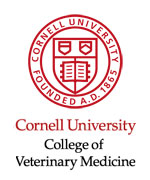SADC-AHEAD Guidelines on Commodity-Based Trade
(4th edition, 2021)
In most of southern Africa the vast majority of cattle are located in areas not free of foot and mouth disease (FMD), leaving owners of these cattle with limited access to regional and international beef markets. This situation constrains investment in cattle production, thereby limiting rural development and helping to entrench rural poverty.
For decades, this situation has simply been accepted because the types of FMD viruses prevalent in the region are maintained by wildlife and are therefore essentially impossible to eliminate. Moreover, until recently, international trade rules and conventions were founded on the need for the locality of beef production to be free of FMD. Fortunately, this situation is changing and options include, among others, management of risk of FMD along individual value chains to enable assurance that the final products are free of FMD virus and therefore can be traded with negligible risk of transmission of infection, irrespective of the FMD status of the locality of production (i.e. commodity-based trade [CBT]).
The first edition of these Guidelines was published early in 2015 to inform beef producing enterprises of the nature of developments at that time and specifically how, step by step, a value chain approach could be exploited to broaden market access. Since May 2015, further changes in international animal health standards for trade in beef produced in FMD-endemic areas have been adopted by the OIE (World Organisation for Animal Health). These changes necessitated an updated edition because they expand options for enabling market access for beef producers in southern Africa not located in areas free from FMD. In 2018, further changes were made in the Guidelines, incorporating topics identified during consultation at a meeting of the Southern African Development Community (SADC) Livestock Technical Committee. This fourth edition of the Guidelines was approved for implementation by the SADC Joint Ministers of Agriculture, Food Security, and Fisheries at their meeting held in Windhoek, Namibia on 7 June 2019.
This document, like its previous editions, demonstrates that export of beef from SADC countries or zones not recognised as free from FMD is possible, especially to regional markets (because the sanitary circumstances that prevail in the southern Africa region are common to many countries). Furthermore, several alternative approaches, under the umbrella term commodity-based trade, are potentially possible, and this guide outlines those that comply with international trade standards as well as their respective advantages, disadvantages and requirements. Integration of sanitary risk management (i.e. for both food safety and animal disease) together with measures that improve the quality and quantity of the end-product along value chains offers an approach that, until recently, has been largely unrecognised, despite providing clear advantages for southern Africa specifically. The Guidelines are available in English, French and Portuguese.
SADC-AHEAD Guidelines on CBT (English)
SADC-AHEAD Guidelines on CBT (French)
SADC-AHEAD Guidelines on CBT (Portuguese)
|











